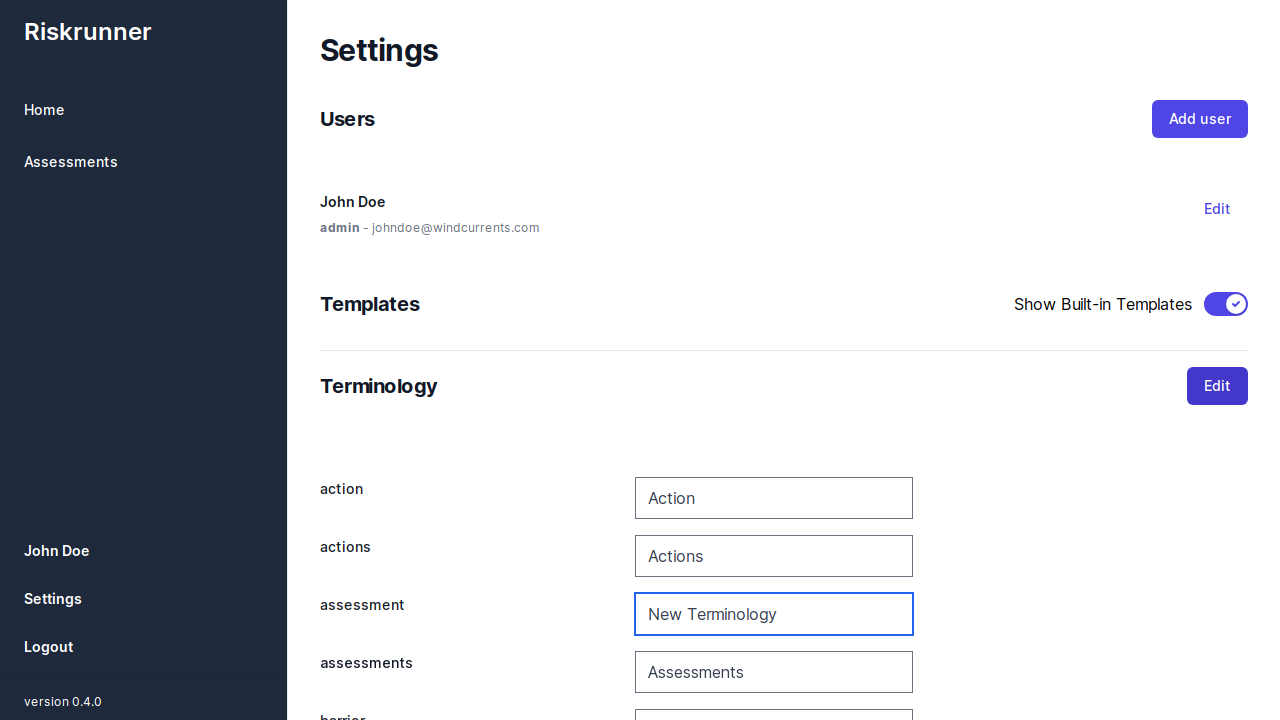Terminology¶
There are several terms that are used throughout the documentation that are worth explaining in more detail. Why were some terms chosen as the default? We’ll try to answer that here.
ISO 31000 and bowtie¶
A lot of the terminology we use in Riskrunner stems from the ISO 31000 standard and the bowtie method. We’ve tried to stay as close to standard terminology while also being as general as possible since Riskrunner is used in multiple industries.
Assessment¶
The term assessment is taken from ISO 31000 (see below). In ISO 31000, risk assessment is a process to identify, analyse and evaluate your risks. In Riskrunner, an assessment is the main way to organise your risks across different scopes.

Reviews¶
The term reviews is also taken from ISO 31000. In ISO 31000, an important concept in the risk management process is called Monitoring and review. From ISO 31000 (paraphrasing a bit):
The organization’s monitoring and review processes should:
ensure that controls are effective and efficient in both design and operation
obtain further information to improve risk assessment
analyze and learn lessons from events (including near-misses), changes, trends, successes and failures
detect changes in the external and internal context, including changes to risk criteria and the risk itself which can require revision of risk treatments and priorities
identify emerging risks
Riskrunner uses reviews to achieve these goals. We opted not to include a separate Monitoring section to keep things simple. In Riskrunner, everything relating to these goals is done using reviews.
Hazard¶
The term hazard is taken from the bowtie method. In the bowtie method, the definition for hazard we prefer is:
An activity, process, substance, equipment, structure or immaterial asset that has the potential to cause harm
Hazard as a term is often confusing because it sounds negative, whereas it should be defined as a part of normal business (just those parts of the business that could spin out of control and cause negative consequences).
In some cases it may be better to use activity or process instead of hazard, but there’s no other term that can be used as broadly as hazard. For instance, if we use activity, it’s a little confusing to include something like “Storage tank with flammable liquid”, because that’s more a substance stored in a structure and not really a type of activity. So even though it’s not perfect, we’ve chosen to use hazard as the default term.
Top event¶
The term top event is taken from the bowtie method. It is a critical moment control is lost over a hazard. The threats and consequences are the causes and effects of the top event.
Changing your terminology¶
If you are more familiar with other terminology, you can change it. Go to your settings and you will be able to edit different terms.

Warning
You’ll have to logout and log back in to see the changes of terminology.